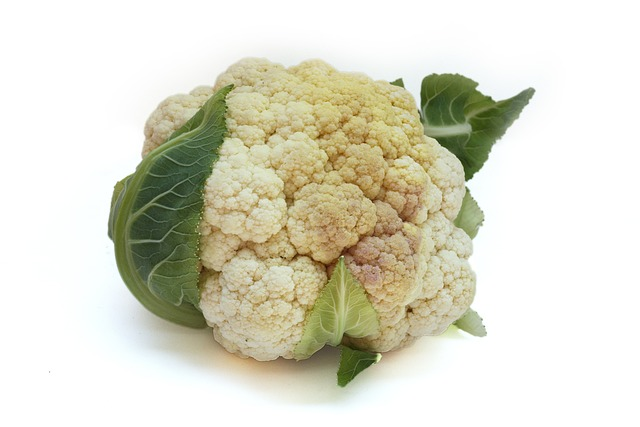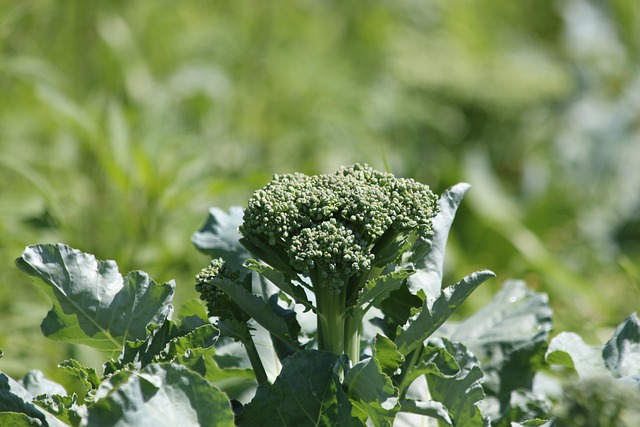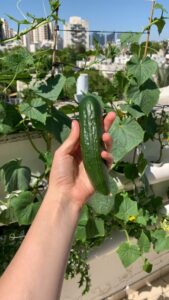Growing your food has become an increasingly popular trend in recent years as people strive to be more conscious of what they consume. Hydroponic gardening is an efficient, cost-effective way to grow fruits, vegetables, and flowers without using soil or traditional planting methods. Instead of soil, hydroponic gardens use nutrient-rich solutions to feed the cauliflower plants. The water-based solution supplies the necessary vitamins, minerals, and nutrients plants need to thrive. Hydroponics is also considered more efficient than traditional farming because of its ability to be done in smaller spaces with less water and energy.
One type of vegetable that can easily be grown hydroponically is cauliflower. Cauliflower is a cool-season crop that does best when temperatures are below 70°F, making it an ideal choice for indoor hydroponic gardens. When grown hydroponically, cauliflower can be harvested 30-45 days after planting and is usually ready for harvest in about 70 days.
In this blog post, we’ll explore growing cauliflower through hydroponics—a form of soilless cultivation gaining traction with gardeners who want to cultivate their organic crops right at home! We’ll talk about the basics—equipment needs, advantages over traditional methods, tips for success, common problems associated with hydroponic cauliflower growth—and everything else you need to know before embarking on such an exciting adventure!

Image credit:pixabay.com
Can You Grow Cauliflower Hydroponically?
The short answer is yes! Hydroponics systems allow cauliflower seedlings to grow without soil, instead relying on nutrient-rich water and a system for circulating it through the plant’s roots. Cauliflower does particularly well in such a situation, as it thrives in damp conditions that provide plenty of oxygen at the root level. In addition, growing your cauliflower hydroponically gives you complete control over what goes into it – no more worrying about pesticides or other contaminants from conventional farming.
When preparing your hydroponic garden for growing purple cauliflower, certain things need to be considered for optimal growth. First, your container should provide good drainage and ample space for roots to spread and grab nutrients. You’ll also want to ensure that the nutrient solution used contains all the necessary elements like nitrogen, potassium, and phosphorus – these are essential for the healthy development of the cauliflower heads. Additionally, since they require long periods of sunlight exposure each day (upwards of 6 hours), it’s important to choose a location with plenty of natural light or artificial lighting sources nearby.
The growth process itself is relatively quick. Still, it requires some vigilance in monitoring the reservoir’s pH and nutrient levels and general maintenance tasks like cleaning out algae or other debris that might accumulate in the system over time. Harvesting can be done once heads have reached their desired size or are still immature (known as “baby heads”) if preferred.
How Long Does It Take To Grow Cauliflower Hydroponically?
Generally speaking, the process from cauliflower seeds to harvest takes about 12 weeks. Various factors, such as temperature and light conditions, nutrient uptake, and water quality, can impact this time frame. Additionally, different nutrient film techniques (NFT) hydroponic systems may require slightly different approaches when growing cauliflower. Making sure you research the type of setup you’re using before planting will help ensure that your crop matures properly and on schedule.
When growing cauliflower hydroponically, it’s important to consider the specific needs of this particular crop. Cauliflower requires ample amounts of nitrogen and potassium but comparatively less phosphorus than other plants; this means that suitable nutrient solutions must be used to ensure optimal growth conditions are met throughout its development. Temperature is also very important; ideal temperatures range between 18-25°C (65-77°F) during day time and 15-20°C (59-68°F) at night. Keeping these parameters within the correct range will help your crop reach maturity faster than if neglected or ignored altogether.
Finally, because hydroponic systems don’t use soil as a medium for growth, special attention needs to be paid to water quality; checking pH levels regularly and using special filters are essential steps for successfully cultivating cauliflower in water-based gardens. To maximize yield while keeping maintenance efforts low, automated systems such as aeroponics or aquaponics cauliflower may provide better results than traditional methods.

Image credit:pixabay.com
Can Broccoli And Cauliflower Be Grown Hydroponically?
Broccoli and cauliflower, two popular varieties of cruciferous vegetables, are no exception. Many gardeners wonder if these two veggies can be grown hydroponically, and the answer is a resounding yes!
Hydroponic gardening is a great way to cultivate hydroponic broccoli and cauliflower in a controlled environment. By controlling the temperature, nutrient-rich water, and light levels, gardeners can provide ideal conditions for these vegetables to thrive. The process of growing these veggies hydroponically begins with the selection of a suitable container or reservoir for their roots. Once this is done, the solution should be prepared with a precise blend of nutrients and pH levels to ensure optimal growth. Finally, adequate light must be provided to encourage their development.
Hydroponically grown broccoli and cauliflower are known for being free of soil-borne pests and diseases, which can reduce yields in traditional gardens; this makes them an attractive option for many gardeners. Compared to traditional soil-based gardens, hydroponic systems can produce larger yields in a much shorter amount of time and require less effort from the gardener. This makes growing these vegetables hydroponically an appealing alternative for many interested in expanding their gardening repertoire.
For gardeners new to the field of hydroponics, who are looking for a vegetable that offers health benefits and is easier to grow than others, broccoli and cauliflower may be ideal. Recent studies have found that growing these vegetables hydroponically may provide higher nutrient values than soil-grown counterparts due to the increased speed of growth in this system.
This is because when all environmental needs for growth are met quickly through hydroponics, it becomes easier for plants to reach their full potential as far as nutrition goes.
Although some claim that soil-grown cauliflower or broccoli tastes better than its hydroponic counterparts, several methods successfully allow one to grow either of these vegetables using a hydroponic setup. For instance, one can use Liquid Culture systems or Deep Water Culture systems which involve stirring up nutrient-enriched water with air stones to provide oxygenation. Another popular method is the Aeroponics system which involves using misting water applications at the roots instead of submerging them in water.
FAQs
No, cauliflower does not need full sun to produce healthy heads. It can thrive in areas of partial shade and even prefer cooler temperatures. The soil must stay moist and well-drained so that the cauliflower will develop properly without any rotting or yellowing.
When choosing a spot for your cauliflower, make sure that it has at least six hours of direct sunlight each day. If there is too much sun, the heads of cauliflower may become discolored or form poorly.
Cauliflower needs Minto hours of full sun per day to grow and produce a good crop. However, too much sun can cause the heads to become discolored or prematurely flower, so it’s important to provide shade or filtered sunlight when possible.
Additionally, cauliflower requires consistent moisture for optimal growth, so be sure to water regularly and deeply, particularly during dry periods. Fertilizing with a balanced fertilizer every 4-6 weeks can also help the plant grow faster.

Conclusion
The cauliflower plant is an excellent crop to grow hydroponically, as it requires minimal space and can be grown in various conditions. Not only is this vegetable easy to cultivate, but it is also packed with vitamins and minerals that make it a great source of nutrition. Hydroponic systems provide ideal growing conditions for this type of vegetable, leading to higher yields and improved nutrient values than traditional soil-based gardens. With careful selection of nutrients, pH levels, and adequate light, gardeners can grow broccoli and cauliflower hydroponically with great success.
By understanding the needs of cauliflower, you can provide the ideal environment for your plants and maximize your yield. With careful planning and execution, you can have a successful hydroponic cauliflower operation that provides fresh, delicious vegetables for you and your family. To ensure the best possible results in your hydroponic cauliflower venture, it is important to select the right equipment for your needs.
The most common type of hydroponic system used for growing cauliflower is a Deep Water Culture system, but other options are also available. Additionally, research the best nutrient solutions and environmental conditions for your crops to maximize their growth potential. With the right setup and maintenance, you can create a thriving hydroponic cauliflower garden that yields delicious vegetables year-round! Good luck!






